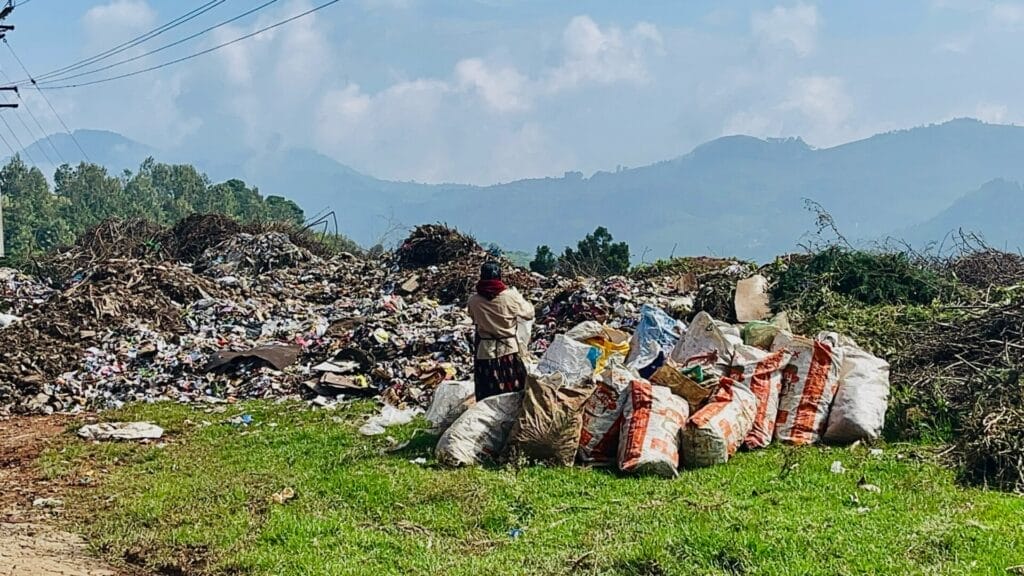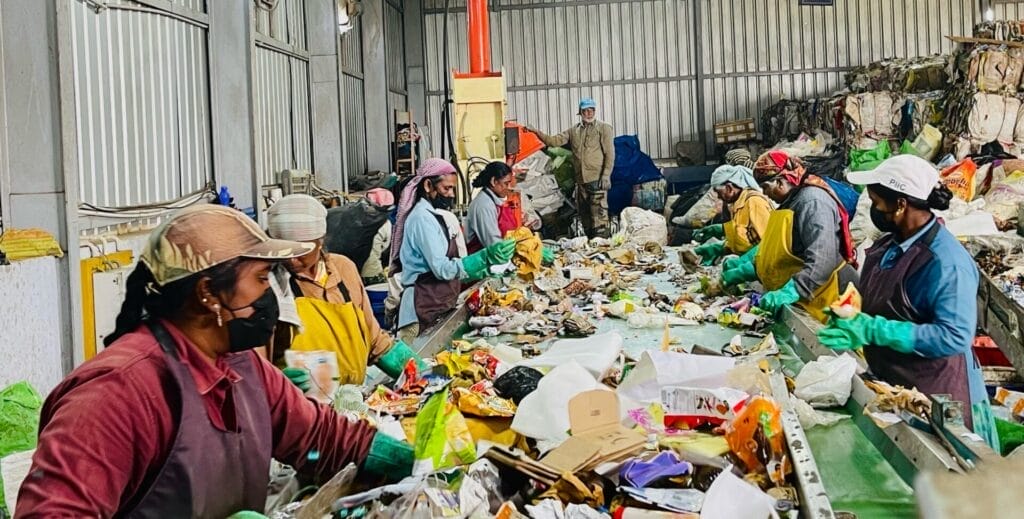Ottupattarai, once marred by the unsightly accumulation of waste in the picturesque hill town of Coonoor in Tamil Nadu, has undergone a remarkable transformation. This was possible through the dedicated efforts of Clean Coonoor, a city-based NGO.
Nestled in the highest part of Coonoor, amidst the tea gardens of the Nilgiris, the waste dumping site in Ottupattarai has metamorphosed into a thriving garden that serves as a community space for residents. The makeover journey began in 2014 when 15 dedicated volunteers established Clean Coonoor to initiate sustainable waste management practices in the town.
Beginnings of a journey
In 2019, Clean Coonoor was first tasked with cleaning up a river, sponsored by Rajshree Pinnamaneni, Director of Nava Bharat Natural Resources India Ltd, from Hyderabad. The NGO helped remove 12,000 tonnes of sludge and debris from a two-kilometre stretch, giving the river a new lease of life.
This initiative led the civil society group to realise that it could undertake a project to clean up Ottupattarai. Clean Coonoor volunteers turned one acre of the dump yard into a lively garden and two more acres into a lawn, while the rest is used to sort waste.
Read more: Bengaluru: Mestri Palya residents turn waste into wealth through innovative training
Samantha Iyanna, founder and managing trustee of Clean Coonoor, said, “Our initiative to clean up the river in 2019 brought new life to the water body and made us see the potential to transform Ottupattarai. Witnessing the positive impact, we turned part of the dump yard into a beautiful garden and lawn, creating a shared space for the community.”
Waste segregation includes the town municipal authorities collecting trash from door to door and separating it. The Ottupattarai Waste Resource Recovery Center then processes both dry and wet waste.
Mustafa, a driver, said, “We systematically sort and gather waste before transporting it to dedicated centres for proper waste management and disposal. Each truck can carry at least 1 to 1.5 tonnes of dry or wet waste.” He added that knowing his work contributes to a cleaner environment was fulfilling.
Overcoming challenges

Coonoor faced several challenges in sustainable waste management, including hilly terrain, city rules forbidding landfills and incineration, and an unorganised dry waste management system.
To tackle these issues, the Coonoor Municipality partnered with Clean Coonoor through a Memorandum of Understanding (MOU) to coordinate waste disposal efforts. The waste management process in Coonoor involves the following steps:

Wet waste management
● Every day Coonoor generates 8–12 tonnes of wet waste. This waste is collected by the municipal trucks and is delivered to the Waste Management Centre.
● The Wet Waste Management Centre (WWMC) processes organic waste from households, markets, and slaughterhouses. This includes food waste, spoiled fruits/vegetables, and animal offal.
● The organic waste is first pulverised using a mechanised pulveriser. The pulverised waste is then composted through a wind-row composting process, where the temperature is carefully monitored and maintained between 50-60°C for about 30 days.
● The resulting compost is tested and certified as Grade A quality, and the Coonoor Municipality has agreed to buy back the entire compost output, which amounts to 50-60 tonnes per month, generating around Rs 5-6 lakh in revenue.
● This compost is then used in public parks, private gardens, and sold to farmers, creating a sustainable cycle.
Dry waste management
● Every day Coonoor generates 4–5 tonnes of dry waste. This waste is collected by the municipal trucks and is delivered to the Resource Recovery Centre.
● A Resource Recovery Centre (RRC) was established to handle the dry waste, which gets sorted into recyclables, non-recyclables and hazardous waste.
● The recyclables are bundled and sold to aggregators for recycling. Non-recyclables are either composted (if they contain organic impurities) or sent to landfills. Hazardous waste is incinerated in a closed-burning facility.
● Through this process, Clean Coonoor has achieved a recyclable recovery rate of 80%.
Overall impact in Ottupattarai
● The partnership between the municipality and Clean Coonoor resulted in the processing of over 6,000 tons of waste, diverting 60% of the town’s plastic waste away from landfills, and reducing 50,000 tons of greenhouse gas emissions.
● The project has also freed up 48 man-years of municipal resources, which have been diverted to other sanitation fronts.
Ottupattarai’s metamorphosis carries historical weight, serving as a dump since the 1930s. Vasanthan Panchavarnam, one of the trustees of Clean Coonoor, said, “Before Independence, this area was on the outskirts of the town. It likely housed sanitation workers, and in 1934, Gandhi visited Ottupattarai as part of his campaign against untouchability.”
Read more: Big problems in small incinerators for sanitary waste burning
Clean environs, happy residents of Ottupattarai
Residents, who were once troubled by a fly infestation and an unbearable stench, can now breathe freely.
“Finally, Ottupattarai feels like a place we can be proud of. The transformation into a Waste Management Park is a game-changer for our community,” said Vaishali I.
Rakesh T, another resident adds, “This transformation proves that change is possible. Ottupattarai’s dumpyard is no longer a problem; it’s an example of an effective solution for managing waste responsibly.”
The transformation has not only improved the quality of life but has also had a positive influence on the real estate market. Pravin, a landowner, said, “The change in Ottupattarai has significantly benefited people in this area. My land was once near the dump yard with little value, but now because of the beautification, the market value of the land has also increased.”
It is a win-win situation for the community and the local authorities, who have benefited from this initiative.
“The amount of waste generated in Ottupattarai exceeds the waste management capacity of the municipal body here. As a result, it had become a dumping ground, but thanks to the initiative of Clean Coonoor, we have transformed the dump yard into a beautiful garden,” said an official from the Coonoor Town Municipality, who did not want to be named.